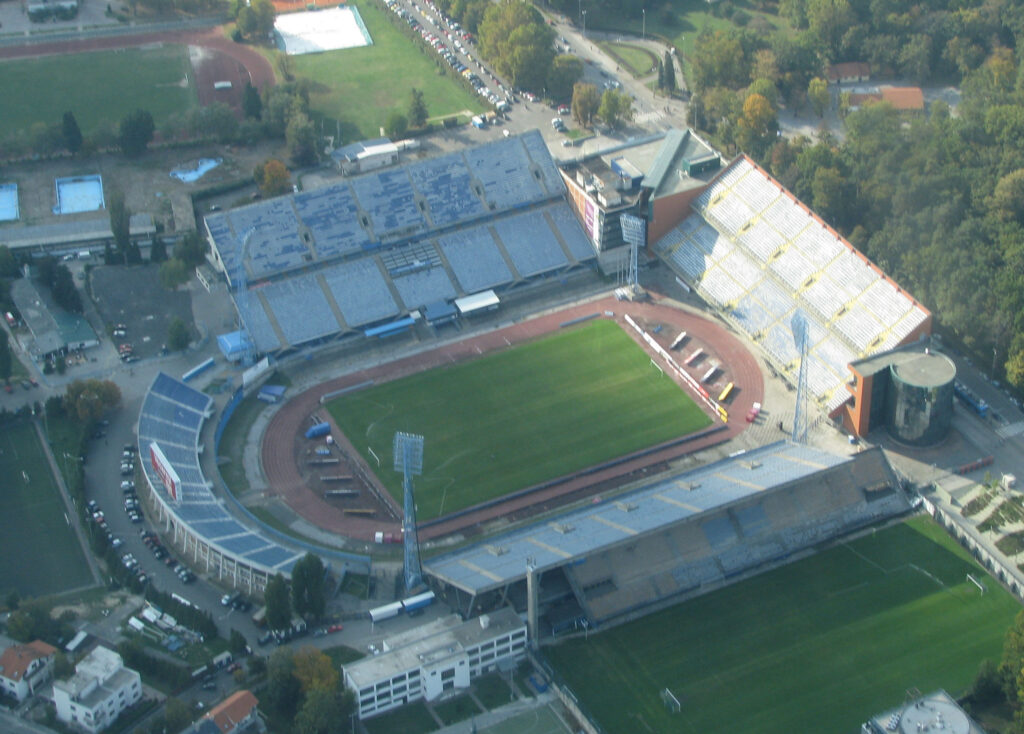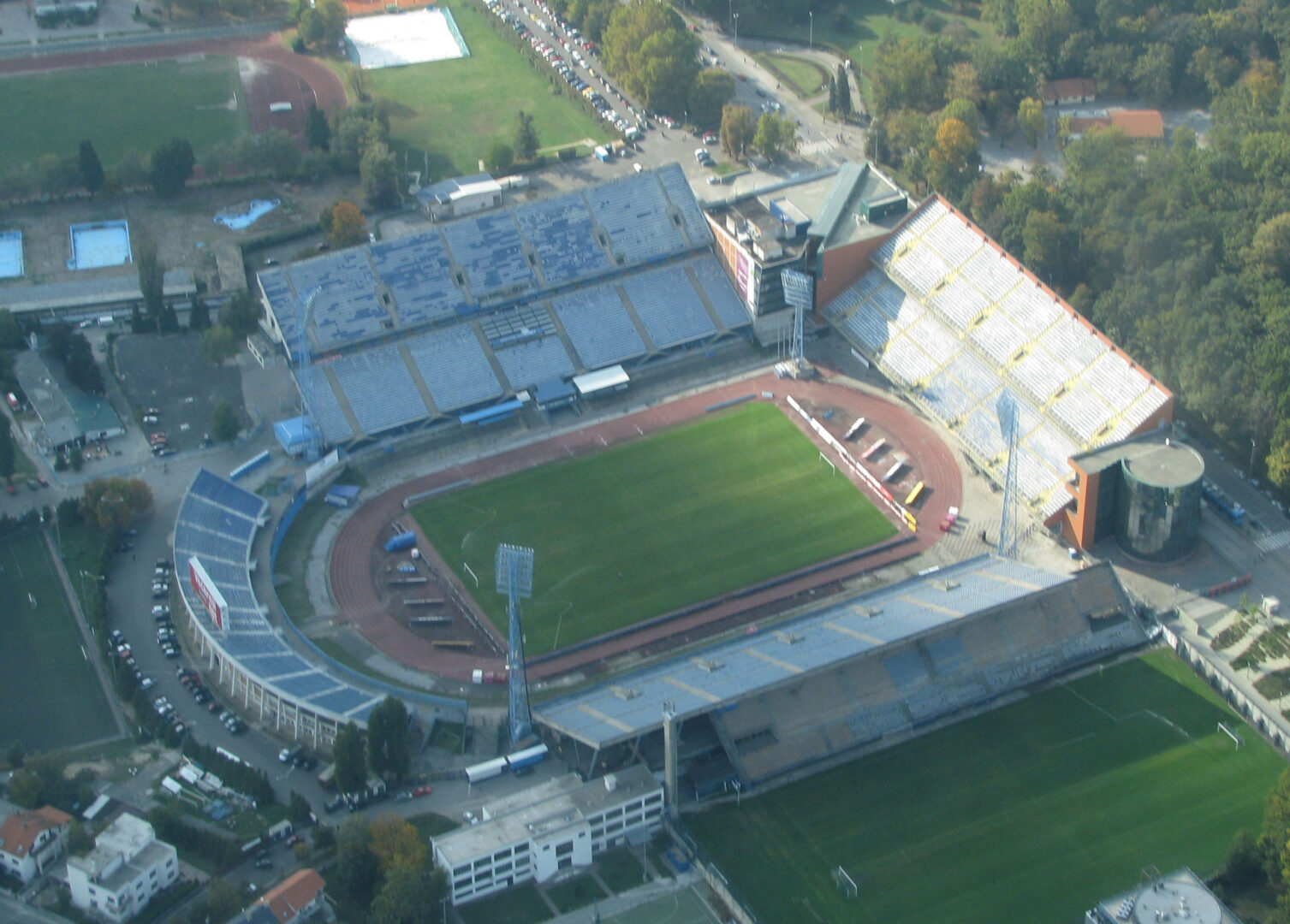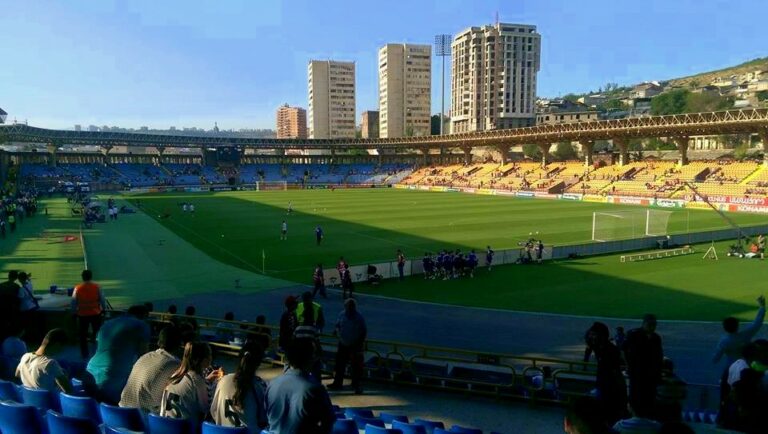
Maksimir Stadium
- Zagreb, Croatia
- 38.079 places
- Opened in 1912
Maksimir Stadium, located in the eastern part of Zagreb, Croatia, is a stadium rich in both footballing tradition and historical significance. Built in 1912 and named after the Maksimir district, it stands as one of the largest stadiums in Croatia, with a seating capacity of 25,912 and a theoretical maximum of 35,423. It serves as the home ground of GNK Dinamo Zagreb and has also hosted most of the Croatian national team’s home fixtures since the country's independence in 1990.
About this place
A Century of Evolution
Maksimir’s journey began in 1912 when the local club HAŠK decided to build a new venue for the growing football scene. The ground was constructed across from Maksimir Park, on land purchased from the Archdiocese of Zagreb. The first version was modest, with a wooden stand for 6,000 spectators — the first of its kind in Zagreb.
Following World War I, the stadium was shared with HŠK Građanski Zagreb, one of the city’s strongest clubs at the time. However, tragedy struck in 1941, during the fascist regime of the Independent State of Croatia. A controversial incident of segregation took place at the stadium, where Serbian and Jewish children were ordered to separate from their classmates — an order the children bravely refused to follow. Later that year, the stadium was set on fire in protest, a moment memorialized in the 1977 film Operation Stadium.
After World War II, Maksimir passed into the hands of the newly founded Dinamo Zagreb, which inherited the legacy of the banned club Građanski. In the decades that followed, the stadium hosted important matches, including games during UEFA Euro 1976 and the 1987 Summer Universiade. In May 1990, Maksimir became the epicenter of a pivotal moment in Yugoslav history: the Dinamo–Red Star riot, seen by many as a prelude to the Balkan conflicts that followed.
Renovations and Modernization
Major renovations took place in 1998, starting with the complete demolition and rebuilding of the northern stand. These works increased the stadium’s capacity and marked the beginning of a modern era for Maksimir. In 2011, a “facelift” included new seating, under-soil heating, drainage systems, and aesthetic improvements. The turf and surroundings were also updated with a new look that matched Dinamo’s club colors.
Despite these efforts, Maksimir has often been criticized for its aging infrastructure. This criticism intensified after the March 2020 earthquake that hit Zagreb. The stadium suffered significant structural damage, especially to the east stand, which has since been closed to the public. Although matches are still played at Maksimir, the eastern tribune — the largest of the four — remains condemned, casting uncertainty over the stadium’s long-term future.
In August 2023, Maksimir earned an unfortunate distinction, being ranked the third ugliest stadium in Europe in a survey conducted by the Money agency, based on reviews from platforms like Google and TripAdvisor. While this may reflect its physical condition, it doesn’t diminish its emotional and historical weight for Croatian fans.
Structure and Layout
Maksimir Stadium consists of four all-seater stands: North, East, South, and West. Unlike some traditional Balkan stadiums, it no longer features standing areas, a change reflecting modern safety regulations. The venue is also used for concerts, with its layout adaptable for live performances.







